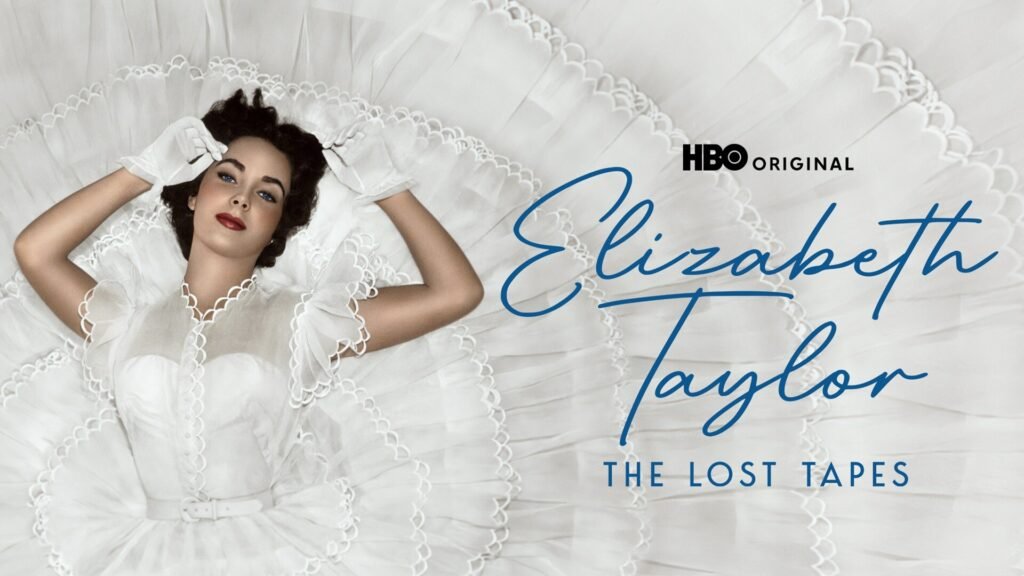
Elizabeth Taylor: The Lost Tapes
What is it about Elizabeth Taylor? Her work caught my fancy, I think, with the Zeffirelli Shakespeare “The Taming of the Shrew” and the Nichols Albee “Who’s Afraid of Virginia Woolf?,” both with then husband Richard Burton. And then also I must have seen her in some of the “Father of the Bride” movies the original ones, with Spencer Tracy, not Steve Martin when they came on television, because I watched almost any comedy that was on television. But those adult dramas she made “Butterfield 8,” “Raintree County,” “A Place in the Sun” weren’t so much my cuppa then, and I’m not sure I’ve ever seen her breakout roles as a child actor in “Lassie Come Home” or “National Velvet.”
And yet she was as familiar to me, growing up in America after World War II, as any face on any magazine cover; she was everywhere in print respectable and respectful print and tabloid newspapers full of salaciousness. All those marriages (twice to Burton), all those fabulous jewels; the bigness of “Cleopatra,” which nearly sank Twentieth Century Fox even though it was the first film for which an actor was paid $1 million, Andy Warhol painted her before he got around to Marilyn Monroe. Commercials for her fragrance line ran through ’70s TV like hair through a comb, she did pioneering philanthropy in AIDS research.
So we have arrived at this week’s understated but elegant little documentary. Nanette Burstein’s “Elizabeth Taylor: The Lost Tapes.” On HBO Saturday at 8 p.m. and streaming on Max thereafter, it takes off from 40 hours’ worth of interviews taped by journalist Richard Meryman beginning in 1964 newly discovered! for a book he didn’t end up writing. She was 32, had been making movies for 22 years and been a star for 20. And so we get her voice, and in smaller but key amounts the voices of close friends and associates, including Roddy McDowall (her co-star in “Lassie Come Home” and lifetime confidant) and Debbie Reynolds (who stopped being a friend after Taylor’s husband Eddie Fisher suddenly left her for Taylor). A wealth of archival film and newsreel footage, home movies and snapshots plus new footage of tape recorders, ashtrays and martini glasses provide excellent illustration of Taylor’s work and world.
Our interest in public figures’ private lives not the dirty laundry, although careers have been made by digging it up and publishing it but a sense of the ordinary life of an extraordinary talent, finding the human being in what I think I can call “iconic” personages who seem unknowable is nothing new. Taylor’s early public image was created by studio publicists, who sent her on dates with their actors simply to make her look like an average teenager (which she also was), but she was one of the first stars for whom that narrative slipped its moorings. Taylor became a “homewrecker” after “stealing” Fisher from Reynolds (she married him, she says, because she could talk to him about his best friend, her late husband Mike Todd died in a plane crash) but paparazzi culture went into overdrive when she started sleeping with Burton on the set of “Cleopatra.”
This is not a career summary or a work of investigative journalism, although Taylor herself has been known to plumb the depths. “What she likes is dominance. She wants someone who will tell her what to do,” we’re told, and later on “She would purposely annoy Todd so that she could lose an argument with him.” Every narrator is somewhat unreliable about facts, about inner life and I suppose this one could be too, the tapes stop when Taylor is in her early 30s, and the next five decades are given to us in brisk outline. But still It feels like a big film, an astute one, a love letter to a remarkable and very human human being.
For More Movies Visit Putlocker.